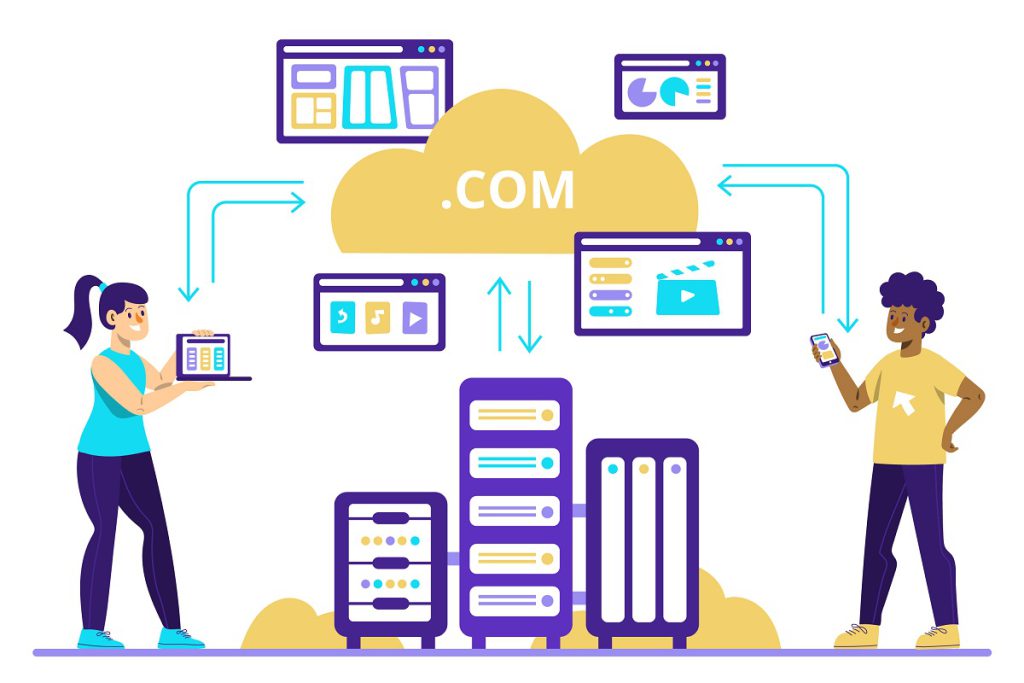Technological advancements like cloud computing, for instance, have been observed to have a sharp increase in recent years.
Analyzing the tendencies of present-day business arenas, Cloud migration of data as well as applications has gained more preference; however, security seems to remain an important consideration.
Hence, although transitioning to the cloud has numerous security advantages over implementing traditional on-premises settings, organisations need to realise that the cloud has different risks as well.
12 Emerging Threats in Cloud Security
Some of the latest emerging threats in cloud security include: Among other emerging threats to cloud computing security, some of them include:

#1. Advanced Persistent Threats (APTs)
APTs are steady, precise cyber operations which are often state-backed or perpetrated by highly developed cyber actors. These threats are becoming rampant in cloud environments. Hackers may try to grab specific data of the customers or other proprietary information present in the cloud with the help of phishing, infecting the system with malware, or with the help of some loopholes.
#2. Misconfigurations
One of the major threats is the misconfiguration of clouds, which is still a problem. Businesses can inadvertently compromise data when cloud permissions and settings are not set up in a suitable manner. In particular, Verizon’s 2020 Data Breach Investigations Report revealed that misconfiguration of infrastructure-as-a-service platforms was responsible for attacks in more than 40% of cases.
#3. Weak Identity and Access Management
Another typical critical risk is the inability to manage identity and access appropriately. This may happen if companies lose track of privileges granted and do not ensure that access is properly revoked when an employee is terminated or if they grant access that is more privileged than needed. This can increase the chances for attackers and malicious insiders to exfiltrate sensitive data in the cloud without being noticed.
Related: Building a Resilient Cloud Security Posture with AWS Well-Architected Framework
#4. Insecure Interfaces and APIs
Even the management and application interfaces and APIs to control, monitor and interact with cloud services are equally vulnerable if not adequately secured. They are still able to use vulnerable APIs that grant direct access to the cloud automation tools and manipulate the infrastructure.
#5. System Vulnerabilities
To this effect, it is important to know that while security in the cloud is distributed, companies must also take responsibility for their systems and applications within the cloud environment. Such flaws in operating systems, applications, and code can also have an impact on customers who use cloud computing services. Any such gap that has been left unaddressed creates room for hacking or attacking the system.
#6. Malicious Insiders
Similar to the case with external threats, the same access controls that are in place help to mitigate the risk of insiders, including when employee accounts are under attack or an employee password has been stolen. But for those who have been approved to get in, it can be dangerous and, on top of that, difficult to identify.
Also Read: Top AWS Security Services for Protecting Your Cloud Infrastructure
As companies make their way into the cloud, the threats might just appear intimidating. The good thing is that the big cloud providers have various tools and services that can help reduce risks. Here’s an overview of key AWS security services and features that can help defend against emerging cloud threats:Here’s an overview of key AWS security services and features that can help defend against emerging cloud threats:
#7. Identity and Access Management
AWS Identity and Access Management (IAM) is essentially a web service that facilitates a secure way of managing and administering access to AWS resources and services. With IAM policies, organisations can define who has access to what on the system while ensuring that they only give the minimum level of access needed. The use of multi-factor authentication (MFA) safeguards the login credentials against the risk of being hacked.
#8. Network Security
Amazon VPC is an AWS service that enables companies to deploy a virtual private network within AWS and specify the necessary network access control. Security groups are filters applied to each instance to limit the traffic entering/leaving the instance. Web Application Firewall (WAF) is a cybersecurity solution that shields web applications from frequent attack techniques and bots by using rulesets and machine learning analysis.
Related: The Importance of Cloud Security: Best Practices and Strategies
#9. Data Encryption
One of the best practices in cloud security is the encryption of data with sensitive content at different stages. AWS has comprehensive means of encryption where the company can use AWS Key Management Service for the generation and administration of encryption keys, use Amazon EBS encryption to safeguard EBS volumes and snapshots, use Amazon S3 client-side encryption to safeguard data before uploading to S3, and use CloudHSM for the storage of keys securely.
#10. Visibility & Monitoring
There are numerous security tools in AWS that offer a consolidated view and analysis of accounts and resources for detecting security threats. Amazon GuardDuty is a service that analyses the data through the use of machine learning algorithms to detect suspicious activities. Amazon Inspector looks for misconfigurations and other issues that may increase risk. CloudTrail is used to track and audit the users and API calls on the different AWS services.
#11. Incident Response
There is an inverse relationship between the time it takes to respond to threats and exploits and the amount of harm they can cause. AWS offers help in the form of Amazon Detective for processing a large amount of user activity data and AWS Security Hub, which offers a centralised dashboard of security alarms, investigations, and recommendations from various services provided by AWS.
Related: The importance of AWS Security Consulting Services in cloud resource protection
#12. Compliance
It is easier to meet compliance requirements arising from regulatory and company standards when using AWS, as it provides a broad array of compliance certifications. AWS has more than 100 services and compliance services addressing regulations such as HIPAA, PCI DSS or FedRAMP. This assists customers in creating safe and compliant spaces at scale within their organisations.
To sum up:
For purposes of cloud security, the model of shared responsibility means that the CSP has the responsibility of securing the underlying infrastructure, while the cloud customer has the responsibility of securing their data, applications and other related configurations and controls within the cloud infrastructure.
New threats that target public cloud platforms will continue to emerge, while AWS has tools and best practices to support customers with robust security to address current threat vectors, such as misconfigurations, intrusions through insecure interfaces, access to sensitive data, and others.
For the future protection of important business systems and data, it is important to keep permissions for cloud storage, network rules, and system patches, among other safety measures, up-to-date all the time.
Companies can increase confidence that security concerns are addressed in the cloud environment by utilising AWS services and built-in features that address identity, network, encryption, visibility and compliance concerns.
More Related Posts:
- Understanding AWS cloud technologies with AWS consulting services
- Cloud-based Enterprise Software Solutions for businesses
- How Can Businesses Ensure The Safety of Data While working in Cloud Environments?
For more data engineering updates, follow us on Facebook, Twitter, and LinkedIn.




